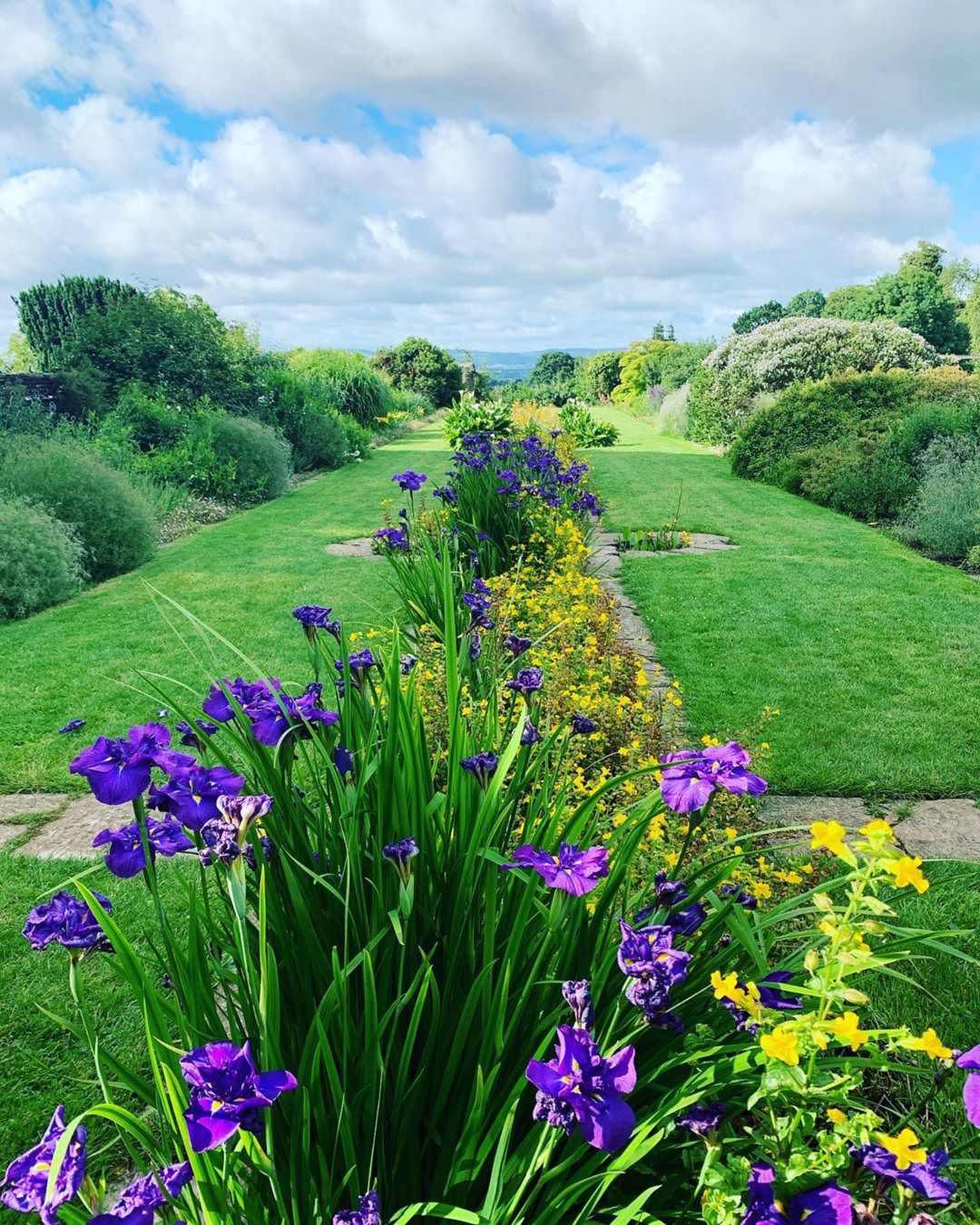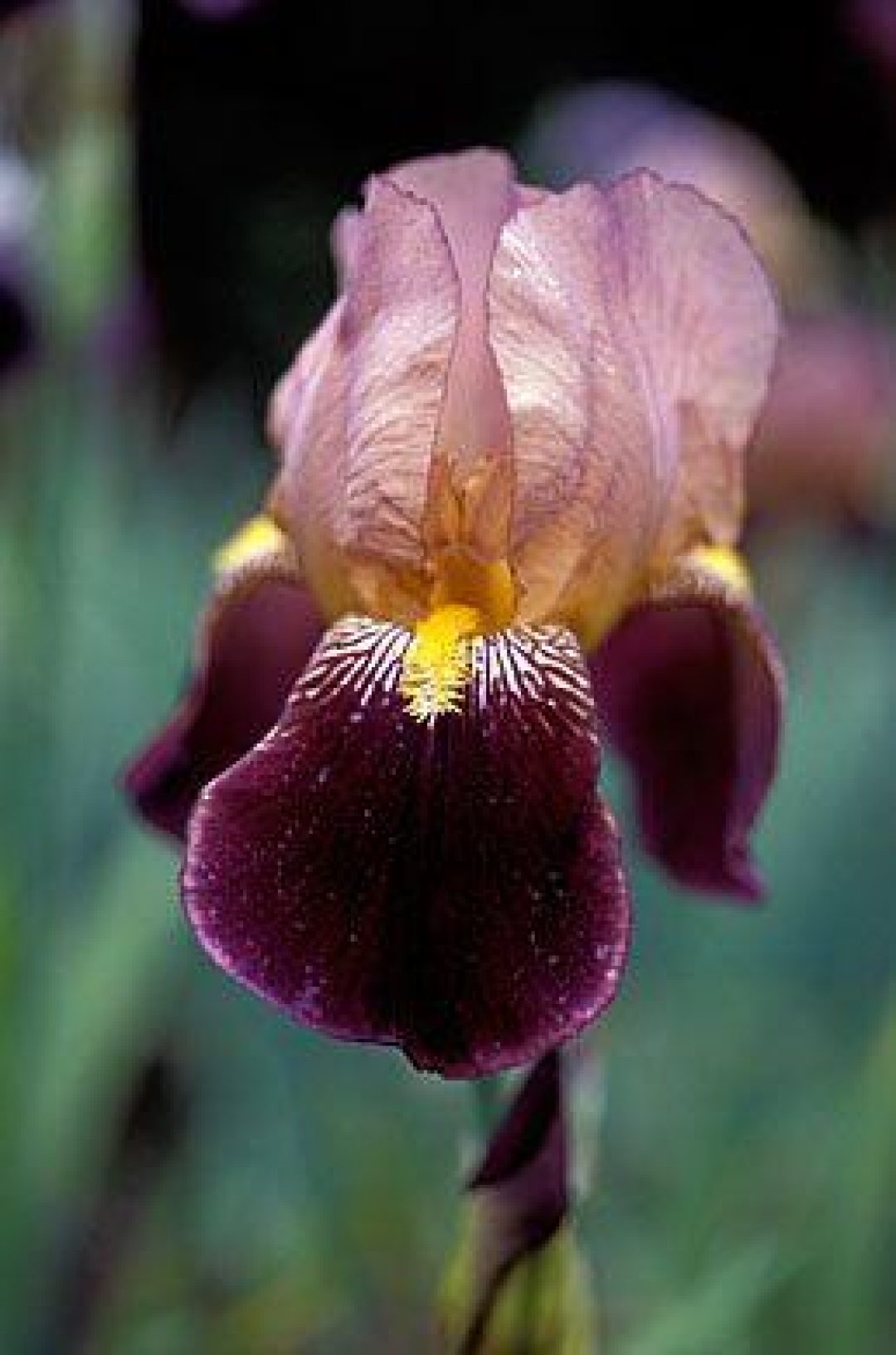
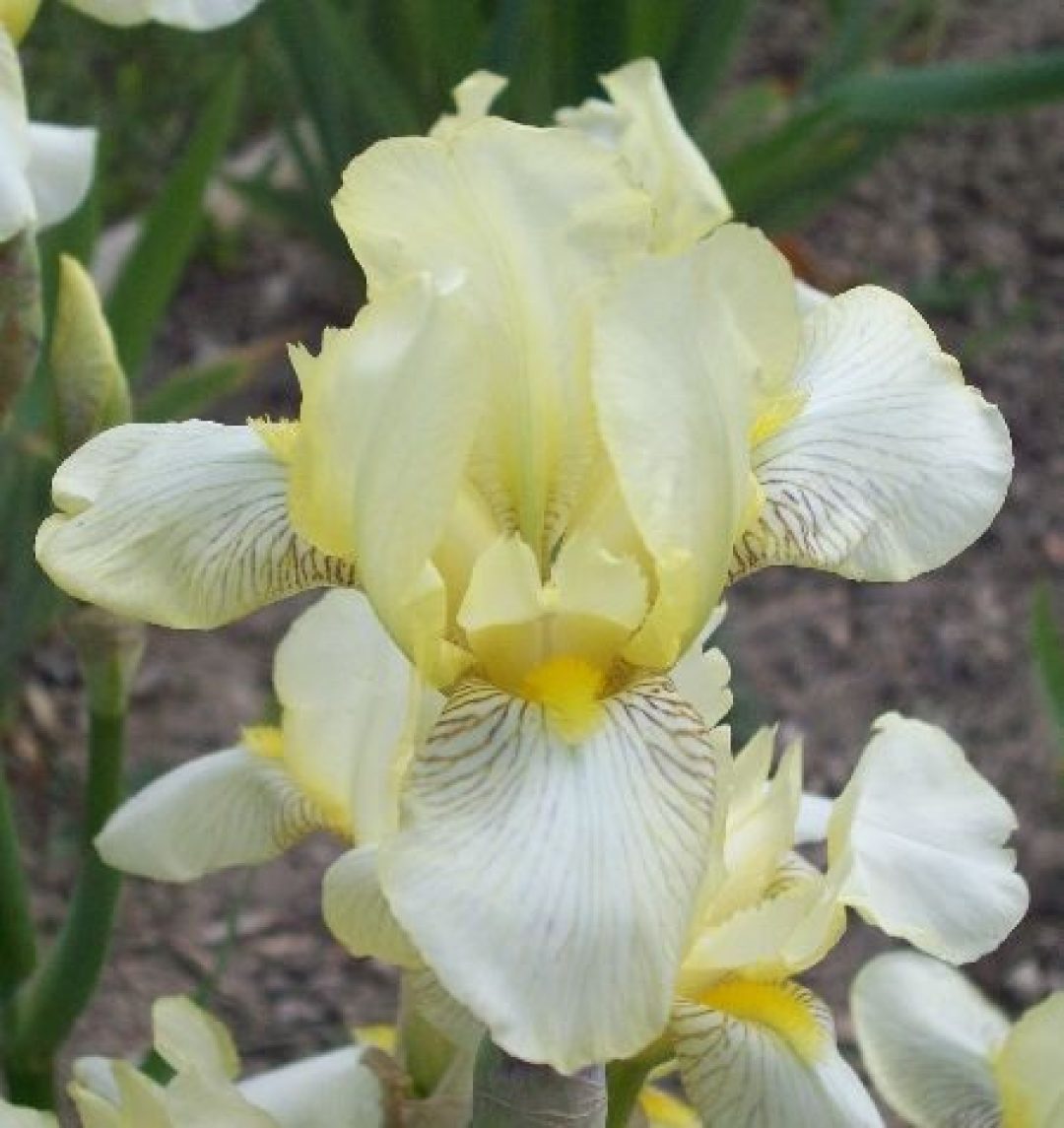
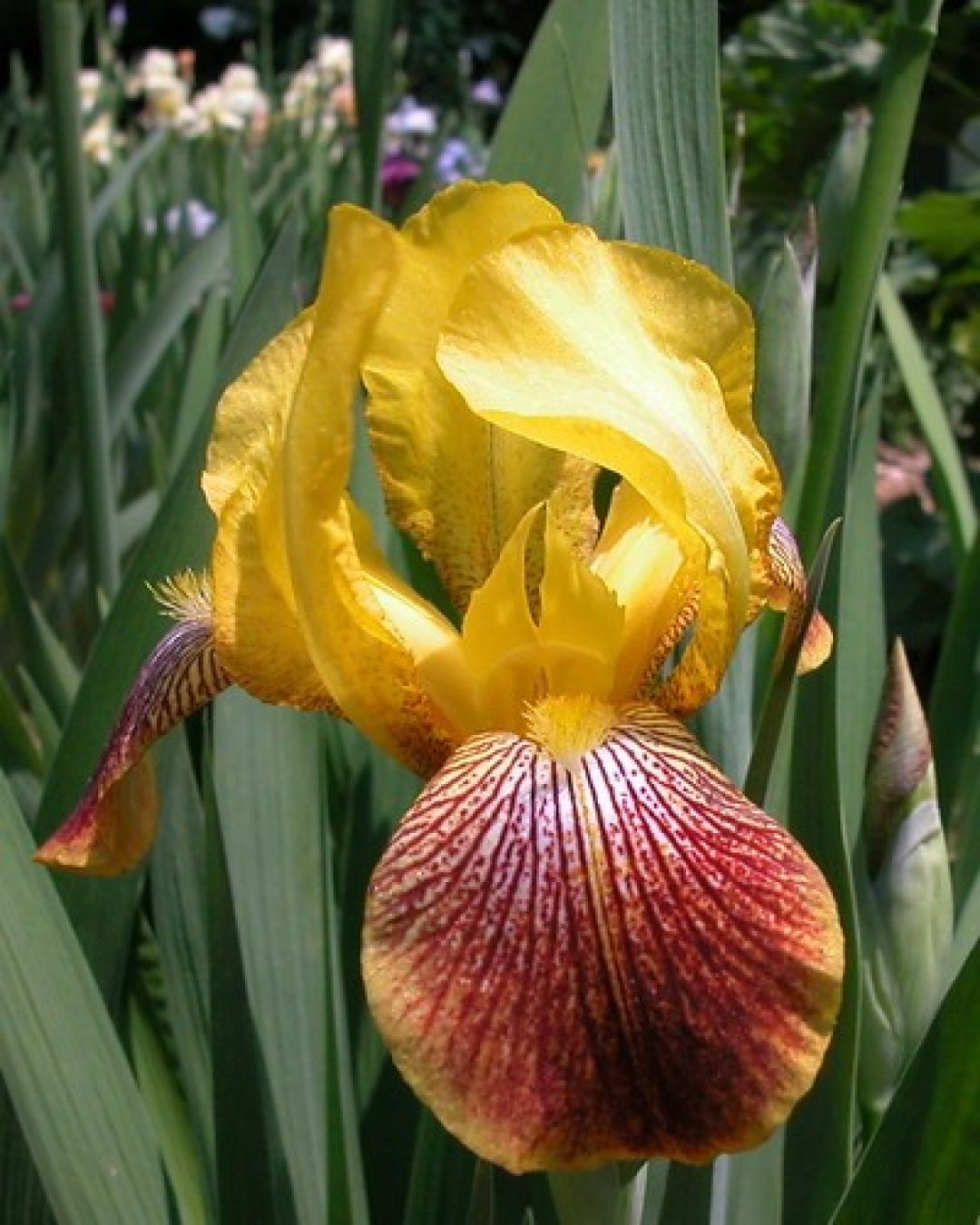
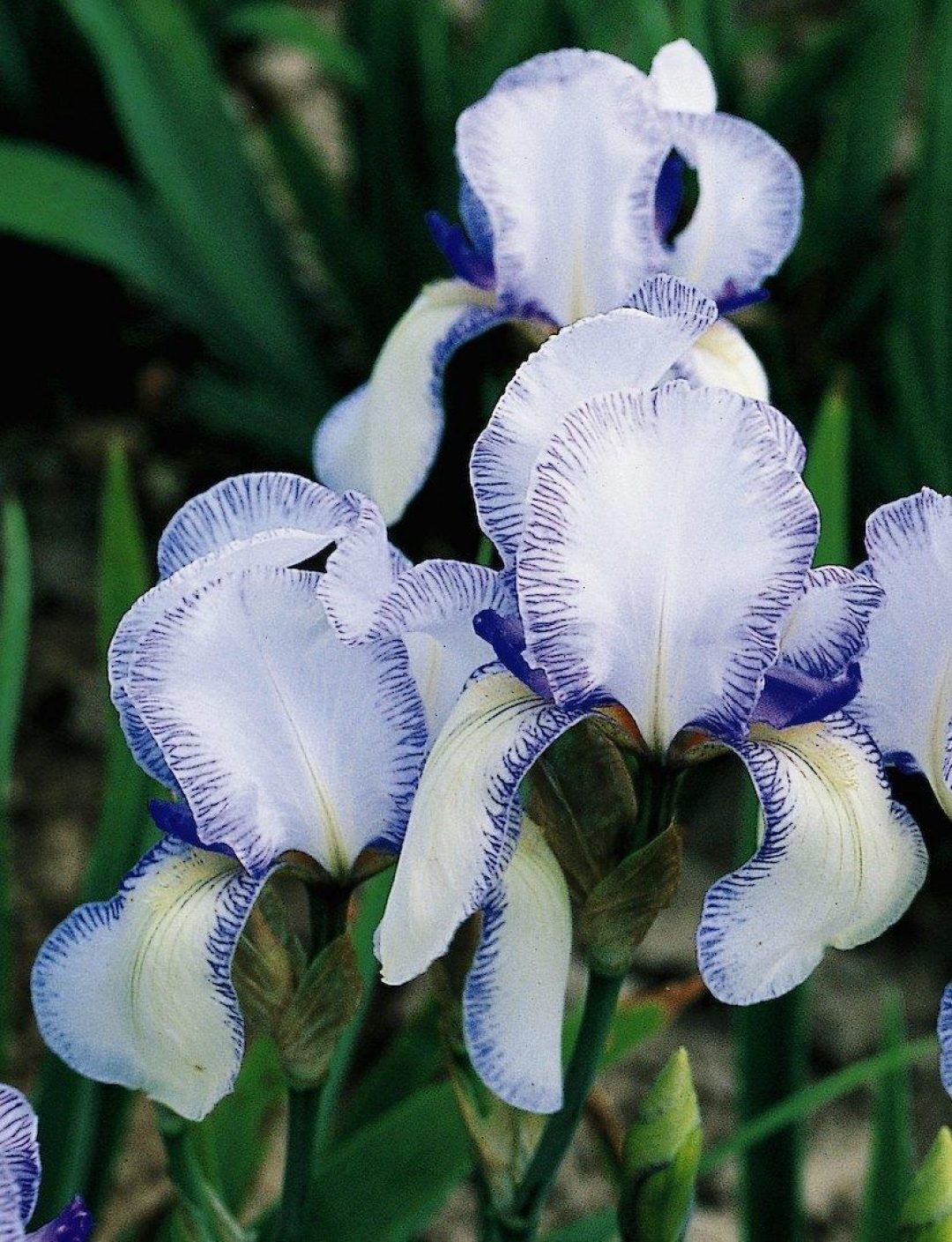
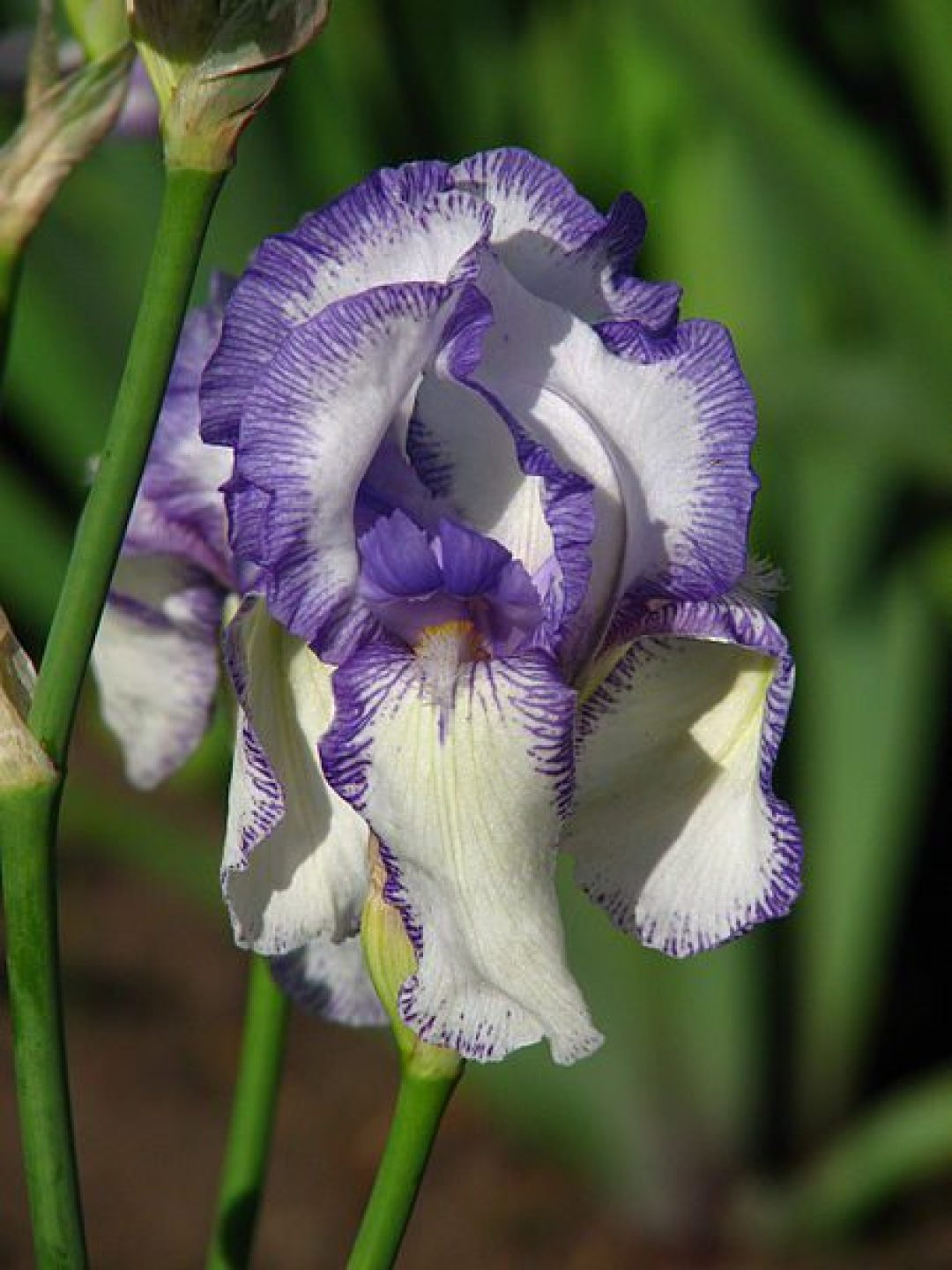

In 2004, an important project was undertaken at Hestercombe to replant irises on the East Rill, according to Gertrude Jekyll’s original design for the area (c.1904).
The reinstatement of the irises was made necessary by the gradual disappearance of the original varieties over the years, and by an ambitious weed eradication programme that saw the borders emptied of plant material in 2003.
A ‘conjectural’ replanting scheme (i.e., ‘in the spirit’ of the original) was produced by Senior Archivist Kim Legate. This was based on archival research into the varieties of flag iris Jekyll used in her many garden commissions, as informed by her surviving notebooks and garden plans; and by her design preferences for irises and iris borders, as determined by a review of her publications on these subjects.
Difficulties
The main difficulty in formulating a plan to replanting the irises in the East Rill borders was the dearth of specific evidence as to the individual varieties first used by Miss Jekyll there. Out of 24 groups of flag iris referred to by Jekyll on her c.1904 plan, only two are actually named beyond their genera: Iris pallida, and Iris variegata ‘Aurea’. In one corner of the design, Jekyll did make a note of where the numbered plant groups were identified:
‘Patches of flag iris are marked into figures, corresponding numbers will be in the lists, with name & kind.’
~ Gertrude Jekyll - from her notes on her plans for Hestercombe
Unfortunately these ‘lists’ have never been found, not even among the 6 pages of plant lists marked ‘Hestercombe’ that survive in her notebooks at Godalming Museum.
It therefore became necessary to introduce another stage into the replanting scheme. A selection of ‘Jekyll’ irises, identified by historical research, were slotted into the East Rill clusters to accord with the colour scheme she would most likely have employed in view of her companion plantings and design proclivities.
Appropriate substitutions were then made for the ‘Jekyll’ irises that are no longer in cultivation. A number of historic irises remain available, but even so the survival rate of ‘Jekyll’ irises has been relatively low.
Of the 63 varieties of flag iris that she included in her planting palette from 1908 to 1925, only 17 remain in cultivation. Modern varieties can’t be used as substitutes, as they are too dissimilar.
Irises developed in the early years of the 20th century are, by way of contrast, still very close to the original species: most are diploid, which means that they are smaller and more delicate in appearance than the modern hybrids, which are tetraphoid.
Ultimately, 14 of the 24 iris groupings on the East Rill plan were replanted using varieties Gertrude Jekyll is known to have used in her design practice. The remaining 10 are of the correct ‘vintage’, that is they were introduced prior to 1935. These plants were not sourced without difficulty, with some of our stock coming from as far away as California, USA.
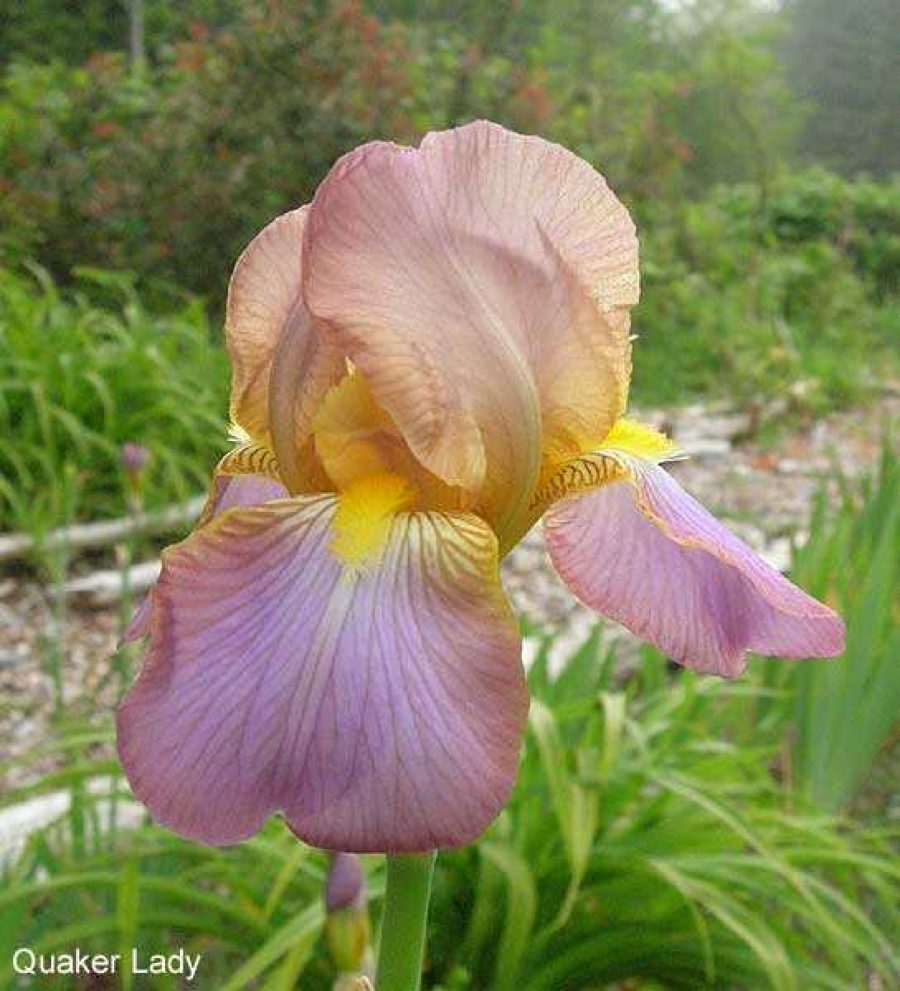
The National Collection of Historic Irises is held at Seagate Nurseries of Long Sutton, Lincolnshire. This is the only nursery that offers historic bearded irises though old ones can often be found in general nurseries, not necessarily accurately named, and in private collections and botanic gardens such as the Oxford Botanic Garden. In 2004, with the assistance of The British Iris Society and its opposite number in North American, The Historic Iris Preservation Society [HIPS], the various sources of historic irises in the UK and USA were summarised in a supplier list to aid present, and future, replanting efforts in the Formal Garden at Hestercombe.
Colour scheme
The proposed colour scheme for the flag irises in the East Rill borders is as follows: --East border, groups numbered 1-12 (purple and white, then lighter purple, followed by deep yellow passing to the rich red purples of the squalens section); West border, groups numbered 13-23 (pink through pale yellows to clear lilacs, purples, pinks and then whites). This colour sequence is derived from two of Miss Jekyll’s most detailed descriptions of iris borders: ‘A Border of Lupine and Iris’ from a 14 October 1916 (p. 503) issue of the famous gardening periodical The Garden; and the introduction to Colour Planning of the Garden by G. F. Tinley, T. Humphreys and W. Irving (1924).
Jekyll’s scheme for the East Rill was a hybrid offering, with a varied plant palette that extended the season of interest beyond early summer and into autumn. In the Jekyll style, both East and West borders were ‘interplanted with something of which the foliage would overspread the irises’, the object being to conceal their unsightly leaves after flowering.
In the East border the ‘interplantings’ that came into flower after the irises included Lavendula angustifolia, Echinops bannaticus, Thalictrum flavum, Kniphofia uvaria, and Gypsophila paniculata; those that flowered in unison with the iris clusters comprised Oleari hastii, Tagetes erecta and Campanula persicifolia.
The West border was given added autumn emphasis with a high concentration of asters (Diana, amellus, amethystinus, Constance, elegans, & J. Dickson), which acted in concert with Kniphofia uvaria (Tritoma), Gypsophila paniculata, Lavendula angustifolia, and Gaura lindheimeri to extend the flowering season and conceal the spent foliage of the irises. Flowering in tandem with the irises in this border were Rosa pimpinellifolia, Oleari hastii, Leucanethemum X supurbum (syn Chrysanthemum maximum), Galega officinalis ‘Alba’, and Gaura lindheimeri.
Take home unique Hestercombe irises!
In 2019, we split our unique iris collection for the purposes of being able to distribute them to our visitors via the Plant Centre. These rare varieties, which all date back to the 1930s and before, were replanted in the East Rill in 2004, and came from all over the world.
They are now ready for you to take home and make your own designs ~ all varieties directly related to Jekyll’s planting design for Hestercombe!
The Plant Centre is open daily from 11am - 4pm. You can visit by booking gardens admission (free for Hestercombe members).
The following varieties will be on sale:
- Albicans
- Alcazar
- Bruno
- Dolly Madison
- Flavescens
- Gracchus
- Gypsy Queen
- Honorabile
- Monsignor
- pallida
- Plumeri
- Purple King
- Quaker Lady
- Queen of May
- Rheintochter
- Sable
- Susan Bliss
- variegata Aurea

Membership at Hestercombe
Join today and enjoy unlimited access to Hestercombe for a whole year
Described as “one of the top twenty gardens to visit in the country”, Hestercombe is always beautiful throughout the year. Join today and enjoy great value: unlimited access to Hestercombe with prices from £4.21 per month.
Your membership includes:
- Unlimited access to Hestercombe Gardens for a year from date of joining for the Member, guests and children according to membership type
- Unlimited 'bring a guest' privileges during March and September
- Half price entry for visitors accompanied by a Member of Hestercombe (one visitor per member)
- Free children's trails available throughout the year
- Special members’ discounts on many of our events throughout the year
- Our 'members first approach' with members receiving 24 hours priority booking for our most popular events, such as Mother's Day, The Bampfylde Lecture, workshops and most importantly, our winter events such as the Christmas Market, Father Christmas and ILLUMINATE
- Half price entry to our partner attractions: Abbotsbury Subtropical Gardens, Forde Abbey Gardens(half price garden entry only), The Bishop’s Palace, Wells(available for full membership only), The Garden House, Dartington Trust Gardens, Exmoor Zooand Glastonbury Abbey(half price garden entry only).
Give a Gift of Membership to friends and family and they too can enjoy all the benefits of membership.
See Membership Options
